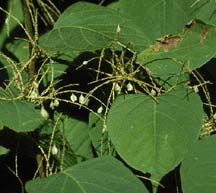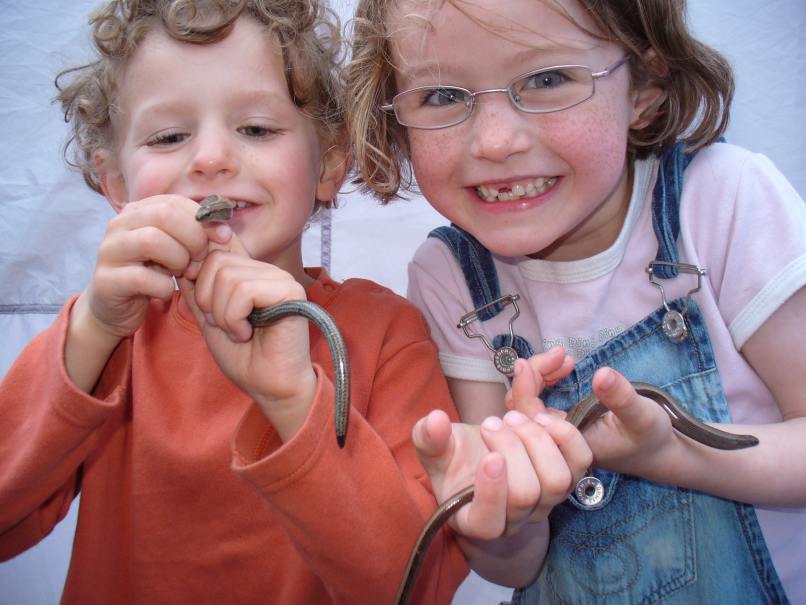 |
 |
UKs ANSWER TO THE AUSSIE CANE TOAD: |
| Author | Message |
|
AGILIS Senior Member Joined: 27 Feb 2007 No. of posts: 694  View other posts by AGILIS |
Posted: 13 Oct 2008  Well what do you all think of the import of the new bug to contain the Japanese knot weed ( bugs name is afalara isadora) not sure thats the right spelling as only heard the name on the radio 2day, is this going to be our , answer to the Australian cane toad , when its finished eating all the weed up whats it going to feed on next ,in a thousand years time? lol Well what do you all think of the import of the new bug to contain the Japanese knot weed ( bugs name is afalara isadora) not sure thats the right spelling as only heard the name on the radio 2day, is this going to be our , answer to the Australian cane toad , when its finished eating all the weed up whats it going to feed on next ,in a thousand years time? lol keith keith LOCAL ICYNICAL CELTIC ECO WARRIOR AND FAILED DRUID |
|
Caleb Forum Coordinator Joined: 17 Feb 2003 No. of posts: 448 View other posts by Caleb |
Posted: 13 Oct 2008 It's Aphalara itadori, according to the bbc news story. There's been quite a bit more research done on this than there was before introducing the cane toad... it would be great if it can cut back the knotweed a bit, there's loads around here. |
|
AGILIS Senior Member Joined: 27 Feb 2007 No. of posts: 694  View other posts by AGILIS |
Posted: 14 Oct 2008 WELL this beetle will also be part of the future food chain for reptiles amphibs birds etc ,will there be any toxic side affects in the long run ? and has there been a testing out on its impact by the people involved in getting it introduced , the cane toad is toxic and will kill many of the species that will devour it like large snakes and goanas and birds that is the major worry in Australia, not because of its numbers . Also I am sure human resourses here in the UK can eliminate this weed quicker than a load of beetles by clearing by hand and burning as we have an abundance of idle labour in this country doing nothing or is that to non pc WELL this beetle will also be part of the future food chain for reptiles amphibs birds etc ,will there be any toxic side affects in the long run ? and has there been a testing out on its impact by the people involved in getting it introduced , the cane toad is toxic and will kill many of the species that will devour it like large snakes and goanas and birds that is the major worry in Australia, not because of its numbers . Also I am sure human resourses here in the UK can eliminate this weed quicker than a load of beetles by clearing by hand and burning as we have an abundance of idle labour in this country doing nothing or is that to non pc  keith keith
LOCAL ICYNICAL CELTIC ECO WARRIOR AND FAILED DRUID |
|
Caleb Forum Coordinator Joined: 17 Feb 2003 No. of posts: 448 View other posts by Caleb |
Posted: 14 Oct 2008 [QUOTE=AGILIS] I am sure human resourses here in the UK can eliminate this weed quicker than a load of beetles by clearing by hand and burning[/QUOTE] It's not quite that easy- the plant can regenerate from any tiny part of root left in the soil. Clearing by hand requires cutting multiple times a year for several years- it supposedly costs ú50,000 per acre to remove it completely. |
|
tim hamlett Senior Member Joined: 17 Dec 2006 No. of posts: 572  View other posts by tim hamlett |
Posted: 14 Oct 2008 i have it in my garden. i daren't try to dig it out in case i make it worse by spreading tiny bits of root around. for the past 7 years i have picked every shoot i see before it gets to more than a couple of inches high. it hasn't spread but neither has it died. not much else i can do really tim |
|
AGILIS Senior Member Joined: 27 Feb 2007 No. of posts: 694  View other posts by AGILIS |
Posted: 14 Oct 2008 HI all my actual question was about the impact of the beetle being introduced will this in the future become the pest? HI all my actual question was about the impact of the beetle being introduced will this in the future become the pest?  keith keith
LOCAL ICYNICAL CELTIC ECO WARRIOR AND FAILED DRUID |
|
Mark_b Senior Member Joined: 26 Jun 2008 No. of posts: 79 View other posts by Mark_b |
Posted: 14 Oct 2008 http://www.arlis.org/docs/vol1/166276164.pdf#page=35 There is the research paper that the news article is all about, havent had change to read it yet 
|
|
Chris Monk Senior Member Joined: 21 Apr 2004 No. of posts: 157 View other posts by Chris Monk |
Posted: 14 Oct 2008 CABI have been researching a biological control for Japanese knotweed for several years now and many promising controls (insects, virus or fungal vectors that control it in Japan) have had to be abandoned as they have a deleterious effect on various plants that are common across the UK. This has had a long term testing programme running to check it out not a random guess that it might work like the import of cane toads to Australia (where it didn't even eat the pest it was introduced to control and ate everything else instead) or the past introduction of species to "complement" the British flora and fauna like grey squirrels, mink or signal crayfish. Even if this one works as well as the news reports are saying there will still be a licensing proceedure before it would become available. They already have a breeding programme to produce enough of the weevils that eat through another pest plant of ponds & waterways - Azolla. If the European horticulturists who imported this plant from Japan in the eighteenth century and distributed it, initially via botanical gardens like Kew, hadn't been so particular about obtaining a perfect specimen they would have brought some of its natural pests with it, without any checking on what effect they might have. PS Don't forget that all that Japanese knotweed infesting the UK is a vegetative clone of just one plant. I've been organising the spraying with recommended herbicides on some of my sites at work for 7 years and its still coming up every year. Derbyshire Amphibian & Reptile Group www.derbyshirearg.co.uk |
|
Caleb Forum Coordinator Joined: 17 Feb 2003 No. of posts: 448 View other posts by Caleb |
Posted: 15 Oct 2008 [QUOTE=tim hamlett] i have picked every shoot i see before it gets to more than a couple of inches high. it hasn't spread but neither has it died. not much else i can do really [/QUOTE] Well, you could try injecting them with glyphosate... |
|
tim hamlett Senior Member Joined: 17 Dec 2006 No. of posts: 572  View other posts by tim hamlett |
Posted: 15 Oct 2008 thanks caleb. i have always been reluctant to use weedkillers containing glysophates in the past as other plants in the garden like bamboos keel over and die at the slightest whiff of them. even painting it onto the leaves had it's drawbacks, i.e. having to wait until the plants were about to come into flower, repeating the procedure over several years and the continued, if reduced, risk of contaminating other plants. however, this method looks like it may well be worth a go. cheers tim |
|
AGILIS Senior Member Joined: 27 Feb 2007 No. of posts: 694  View other posts by AGILIS |
Posted: 15 Oct 2008 thats the trouble the cure can end up worse then the original problem then trying to find a cure for the cure add infinitum thats the trouble the cure can end up worse then the original problem then trying to find a cure for the cure add infinitum keith keith
LOCAL ICYNICAL CELTIC ECO WARRIOR AND FAILED DRUID |
- UKs ANSWER TO THE AUSSIE CANE TOAD |